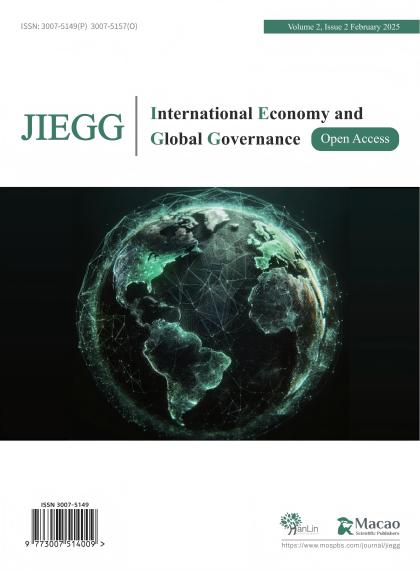-
Acharya, A. (2014). Global international relations (IR) and regional worlds. International Studies Quarterly, 58(4), 647–659.
-
Philpott, D. (1999). Westphalia, authority, and international society. Political Studies, 47(3), 566–589.
-
Carvalho, B. de, Leira, H., & Hobson, J. M. (2011). The big bangs of IR: The myths that your teachers still tell you about 1648 and 1919. Millennium: Journal of International Studies, 39(3), 735–758.
-
Glanville, L. (2013). The Myth of “Traditional” Sovereignty. International Studies Quarterly, 57(1), 79–90.
-
Berridge, G. (2010). Diplomacy: Theory and practice (4th ed.). Palgrave Macmillan.
-
Chang, Y. (1988). The Ming Empire: Patron of Islam in China and Southeast-West Asia. Journal of the Malaysian Branch of the Royal Asiatic Society, 61(2), 1–44.
-
Phillips, J. (2019). The life and legend of the Sultan Saladin. Yale University Press.
-
Doyle, M. W. (2017). Kant, liberal legacies, and foreign affairs. In Immanuel Kant (pp. 503–533). Routledge.
-
Liu, X. (2010). The Silk Road in world history. Oxford University Press.
-
Waltz, K. N. (1988). The origins of war in neorealist theory. The Journal of Interdisciplinary History, 18(4), 615–628.
-
Swope, K. M. (2013). A dragon’s head and a serpent’s tail. University of Oklahoma Press.
-
Shaughnessy, E. L. (1999). Before Confucius: Studies in the creation of the Chinese classics. State University of New York Press.
-
Zhang, Y. (2014). The idea of order in ancient Chinese political thought: A Wightian exploration. International Affairs, 90(1), 167–183.
-
Lu, P., Li, M., Fu, S., Onyebuchi, C. H., & Zhang, Z. (2023). Modeling the Warring States period: History dynamics of initial unified empire in China (475 BC to 221 BC). Expert Systems with Applications, 230, 120560.
-
Morgenthau, H. J. (1973). Politics among nations. Alfred A. Knopf.
-
General History of China (5). (2002). The Early Eastern Zhou, Spring and Autumn, and Warring States Periods: Transition from slavery to feudalism. Xinhua News Agency.
-
Lewis, M. E. (1990). Sanctioned violence in early China. State University of New York Press.
-
Loewe, M., & Shaughnessy, E. L. (Eds.). (1999). The Cambridge history of ancient China: From the origins of civilization to 221 BC. Cambridge University Press.
-
Soltaninejad, M. (2019). Coalition-building in Iran’s foreign policy: Understanding the 'Axis of Resistance.' Journal of Balkan and Near Eastern Studies, 21(6), 716–731.
-
Kissinger, H. (1979). White house years. Little, Brown and Company.
-
Undrakh, D., & Chinbat, I. (2019). On five Mongolia military campaigns of Ming Emperor Yongle against the Mongols. Mongolian Journal of Foreign Languages and Culture, 23(1), 76–83.
-
Mearsheimer, J. J. (2001). The tragedy of great power politics. W.W. Norton & Company.
-
Wade, G. (2005). The Zheng He voyages: A reassessment. Journal of the Malaysian Branch of the Royal Asiatic Society, 78(1), 37–58.
-
Zsombor, R. (2015). The Timurid Empire and Ming China: Theories and approaches concerning the relations between the two empires. Department of East Asian Studies, Eötvös Loránd University.
-
Turnbull, S. R. (2008). The Samurai invasion of Korea: 1592-98. Osprey Publishing.
-
Whitefield, S. (1999). Life along the Silk Road. University of California Press.
-
Fairbank, J. K., & Goldman, M. (2006). China: A new history. Harvard University Press.
-
Donner, F. M. (2010). Muhammad and the believers: At the origins of Islam. Harvard University Press.
-
Ahmad, M. (2022). The Treaty of Hudaybiyyah: Illuminating the path to unity and resilience in Islam. Reflections.
-
Ibrahim, A. S. (2024). Muhammad’s military expeditions. Oxford University Press.
-
Watt, W. M. (1956). Muhammad at Medina. Clarendon Press.
-
Esposito, J. L., & Voll, J. O. (1996). Islam and democracy. Oxford University Press.
-
Rizvi, M. M. A. (2012). Velayat-e-Faqih (Supreme Leader) and Iranian foreign policy: An historical analysis. Strategic Analysis, 36(1), 112–127.
-
Asbridge, T. (2014). The Crusades: The authoritative history of the war for the Holy Land. HarperCollins e-Books.
-
Tyerman, C. (2007). God’s war: A new history of the Crusades. Penguin.
-
Acharya, A., & Buzan, B. (2007). Why is there no non-Western international relations theory? An introduction. International Relations of the Asia-Pacific, 7(3), 287–312.
-
Hobson, J. M. (2004). The Eastern origins of Western civilisation. Cambridge University Press.
-
Smith, S. (2000). The discipline of international relations: Still an American social science? The British Journal of Politics and International Relations, 2(3), 374–402.
-
Nye, J. S. (2004). Soft power: The means to success in world politics. Public Affairs.
-
Rostow, W. W. (1990). The stages of economic growth: A non-communist manifesto (3rd ed.). Cambridge University Press.
-
Wallerstein, I. (2020). World-systems analysis: An introduction. Duke University Press.
-
Ikenberry, G. J. (2001). After victory: Institutions, strategic restraint, and the rebuilding of order after major wars. Princeton University Press.
-
Herman, E. S., & Chomsky, N. (1988). Manufacturing consent: The political economy of the mass media. Pantheon Books.

